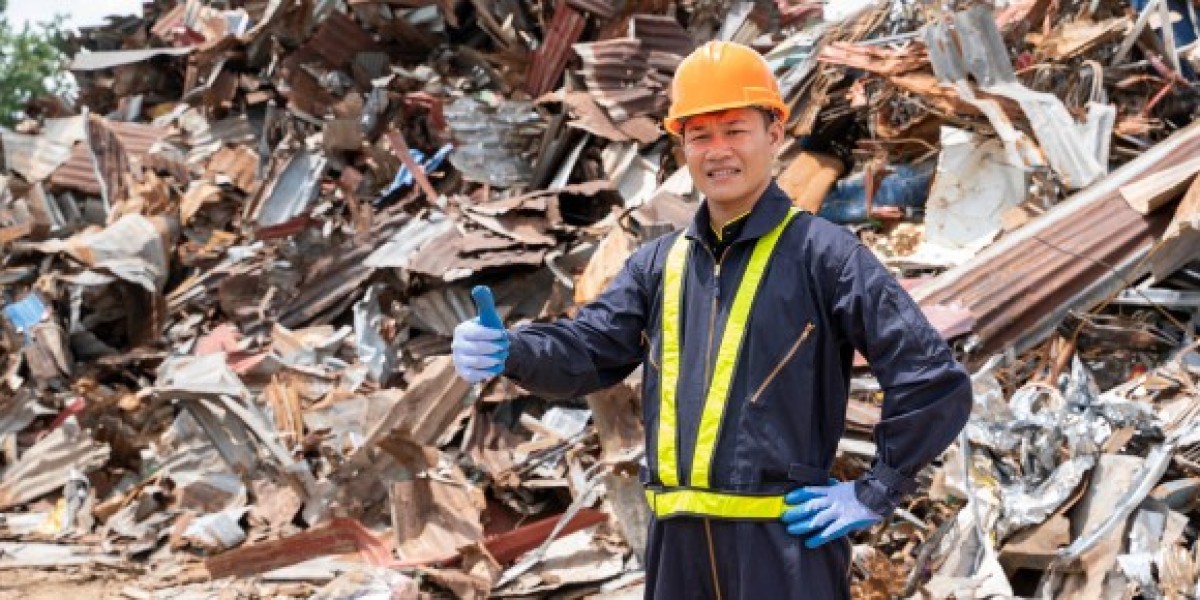Proper hazardous waste removal is crucial to protecting both the environment and human health. Hazardous waste includes materials that are dangerous, toxic, or flammable, and improper disposal can lead to contamination of air, water, and soil. Whether you are handling household hazardous waste (HHW) or industrial waste, it's essential to understand the steps involved in safe disposal. This guide will walk you through the process of hazardous waste removal, ensuring it is done correctly and responsibly.
1. Understanding Hazardous Waste
Before diving into the removal process, it’s important to understand what constitutes hazardous waste. These materials fall into one of the following categories:
Flammable or Combustible: Items that can catch fire easily, such as gasoline, paint thinners, and certain cleaning products.
Corrosive: Substances that can destroy living tissue or damage materials, like acid-based cleaners or battery acid.
Toxic or Poisonous: Materials that can cause serious health issues, such as pesticides, lead-based paint, and certain industrial chemicals.
Reactive: Items that may explode or release toxic fumes when exposed to other chemicals, such as old fireworks or solvents.
Common household hazardous waste includes items like old batteries, paints, cleaning supplies, pesticides, and automotive fluids. Proper identification of hazardous waste is the first step in ensuring that it is disposed of safely.
2. Check Local Regulations
Different regions have specific regulations regarding the disposal of hazardous waste. It’s essential to familiarize yourself with local laws to ensure you comply with them. Local environmental agencies or waste management authorities often provide guidelines on what can and can’t be thrown away in regular trash, as well as where and how hazardous waste should be disposed of.
Some areas offer special collection days or drop-off locations for hazardous waste, which can save you time and money. Make sure you check if such services are available in your community.
3. Gather Necessary Materials and Equipment
If you are handling hazardous waste on your own, make sure you have the appropriate safety gear and tools. Safety is the top priority when dealing with potentially dangerous materials. Key equipment includes:
Protective gloves to prevent direct contact with harmful chemicals.
Safety goggles or face shields to protect your eyes from splashes or fumes.
Respirators or masks for protection against inhaling hazardous fumes, especially when handling volatile substances.
Leak-proof containers to safely store the waste before removal.
Absorbent materials in case of spills or leaks (e.g., kitty litter for liquid chemicals).
Ensure that you have all necessary equipment on hand to safely handle and transport the hazardous waste to the appropriate disposal site.
4. Sort and Separate the Waste
Sorting your hazardous waste is an important step that ensures proper handling and disposal. It’s crucial to separate materials based on their classification (flammable, corrosive, toxic, or reactive) and place them in secure, labeled containers. Mixing incompatible materials can cause dangerous reactions or leaks, so take care to organize everything correctly.
Some examples of hazardous waste types that need to be sorted include:
Paints and solvents: Store these in tightly sealed containers to prevent leakage and fumes.
Batteries: Store batteries separately, as they can leak or explode if damaged.
Pesticides and herbicides: Keep in original containers to avoid leaks or spills.
Used oils and automotive fluids: These should be stored in containers specifically designed for liquids.
By properly sorting waste, you make it easier to dispose of each type in the correct manner, whether it requires recycling, neutralization, or transportation to a hazardous waste disposal facility.
5. Transport the Waste Safely
Once the hazardous waste is sorted and contained, it’s time to transport it to the designated disposal location. During transport, take precautions to avoid leaks or spills. Here are a few tips for safe transportation:
Use sealed, leak-proof containers that are suitable for the materials you’re carrying.
Secure the waste to prevent movement inside the vehicle, which can cause spills.
Avoid high temperatures in the vehicle, as heat can cause chemicals to react or become volatile.
Never mix hazardous materials in the same container when transporting.
If you’re unsure of how to safely transport hazardous waste, consider hiring a professional service to handle it. This will ensure the process is completed in compliance with all safety standards.
6. Disposal Options: Where to Take Hazardous Waste
The disposal options for hazardous waste depend on local regulations, the type of waste, and available services in your area. Here are common methods of disposal:
Household Hazardous Waste Collection Events: Many cities host annual or semi-annual collection events where residents can drop off hazardous materials for proper disposal.
Hazardous Waste Disposal Centers: These are facilities designed to handle and process hazardous waste. They often accept various types of waste, from old chemicals to electronics.
Recycling Programs: Some hazardous materials, like certain batteries and fluorescent light bulbs, can be recycled. Check with your local recycling program for specific guidelines on hazardous waste.
Professional Waste Disposal Services: If you’re dealing with large quantities or industrial hazardous waste, professional hazardous waste disposal companies specialize in handling, transporting, and disposing of these materials in accordance with federal and state regulations.
Make sure to verify the types of waste each facility or service accepts and follow all instructions for proper drop-off or pickup.
7. Hazardous Waste Removal Services
If you’re overwhelmed by the process or don’t want to deal with hazardous waste removal on your own, consider hiring a professional hazardous waste removal service. These services have the expertise, equipment, and resources to safely remove and dispose of hazardous materials from your home or business. Many services offer scheduled pickups, and they ensure that all materials are disposed of in an eco-friendly and compliant manner.
Professional services take the guesswork out of the process and ensure the waste is handled in a manner that meets local, state, and federal regulations.
8. Record Keeping and Documentation
For businesses or large-scale hazardous waste disposal, it’s important to maintain records of waste disposal. This documentation ensures compliance with environmental regulations and can serve as a reference in case of audits or inspections. Keep receipts or records from waste disposal facilities, and if applicable, maintain logs of the materials removed and the disposal methods used.
Conclusion
Proper hazardous waste removal is essential for protecting both the environment and human health. By following these step-by-step guidelines—identifying the waste, sorting it safely, and choosing the right disposal method—you can ensure that hazardous materials are removed and disposed of responsibly. If you're unsure about handling hazardous waste on your own, consider reaching out to a professional removal service to ensure everything is taken care of properly and safely.









